Wine enthusiasts know that the alcohol content in wines can vary greatly, ranging from as low as 5.5% to as high as 23% Alcohol By Volume (ABV). The variation of alcohol levels in wine depends on factors such as grape variety, fermentation process, and whether the wine is fortified or not. Understanding the range of alcohol concentration in different wines can help wine lovers make informed choices when selecting a bottle for any occasion.
Alcohol Levels of Wine From Lowest to Highest
Lighter, lower alcohol wines tend to be more delicate and refreshing, making them ideal for casual sipping or pairing with lighter dishes. On the other hand, stronger wines with higher alcohol level can present more complex flavors and bolder profiles, which make them well-suited for pairing with heavier, richer dishes. Additionally, fortified wines, such as Port, can push the boundaries of normal wine alcohol content, reaching up to 20% or even 25% ABV in some cases, and are typically enjoyed as an after-dinner drink or dessert wine.
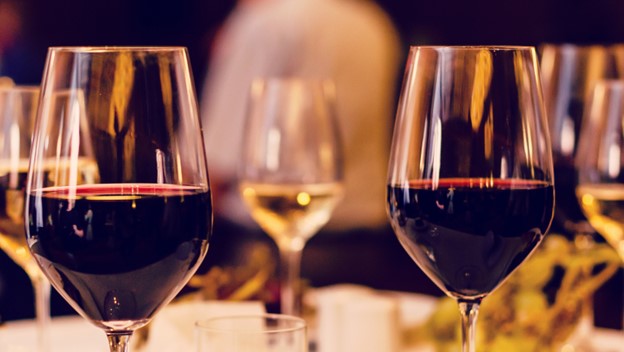
With such a wide range of alcohol percentages, it’s essential for consumers to be aware of the particular wine’s alcohol concentration before making a purchase. This knowledge will help ensure the selected wine complements the meal, event, or personal preferences, ultimately providing an enjoyable wine-drinking experience.
Understanding Alcohol Content in Wines
Alcohol concentration plays a significant role in determining the taste, body, and overall experience of wine. Factors such as grape variety, climate, and winemaking techniques contribute to variations in alcohol levels, which in turn impact the final product.
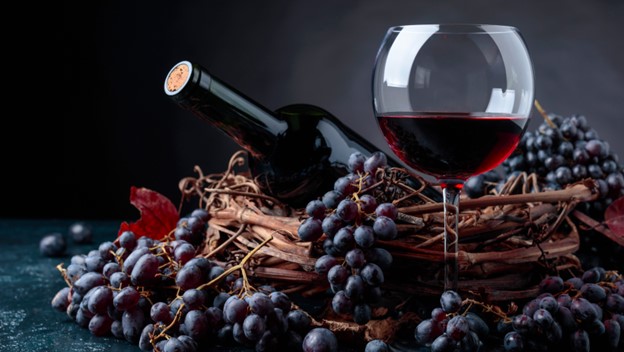
Impact on Taste and Body
Higher alcohol levels in wine generally contribute to a fuller body, while lower ABV leads to lighter-bodied wines. The alcohol concentration affects the viscosity of the wine, which can influence how it feels in the mouth. Additionally, higher alcohol content in wine typically results in sweeter and bolder ripe fruit flavors, and balances out the sweetness and acidity of the wine.
Variations in Wine Types
How much alcohol is in wine? The alcohol content of wine can vary significantly, ranging from as low as 5.5% to as high as 23% ABV. Some common examples of low to high ABV wines include:
- Low ABV Wines (5.5% – 10%): German Rieslings, Moscato, some Vinho Verde
- Medium ABV Wines (10% – 13%): Prosecco, most Sauvignon Blancs, many Pinot Noirs
- High ABV Wines (13% – 16%): mostly red wine as California Zinfandels, Shiraz, Cabernet Sauvignons from warmer climates
- Very High ABV Wines (16%+): Fortified wines like Port, Madeira, and some Amarone
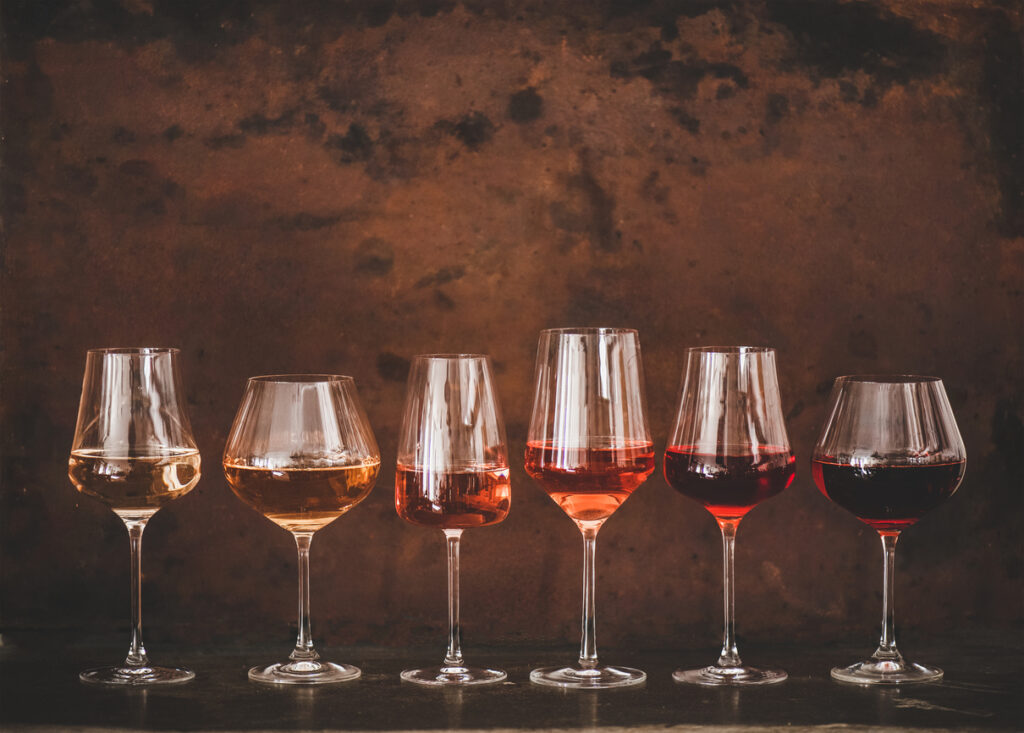
It is important for consumers to be aware of the alcohol content in the wines they consume, as it impacts the overall flavor profile and intensity of the wine. Additionally, understanding the normal wine alcohol content can help individuals moderate their intake and make informed decisions about their wine selections.
Lightest Wines
In this section, we will discuss the lightest wines in terms of alcohol content, focusing on white wines and rosé wines. These wines typically have a lower ABV percentage compared to stronger wines, making them a popular choice for those seeking a lighter, more refreshing experience.
White Wines
White wine is generally lighter in alcohol content due to the types of grapes used and the winemaking process. The majority of white wines have an alcohol content that ranges between 5.5% and 13% ABV. Here are some examples of light whites:
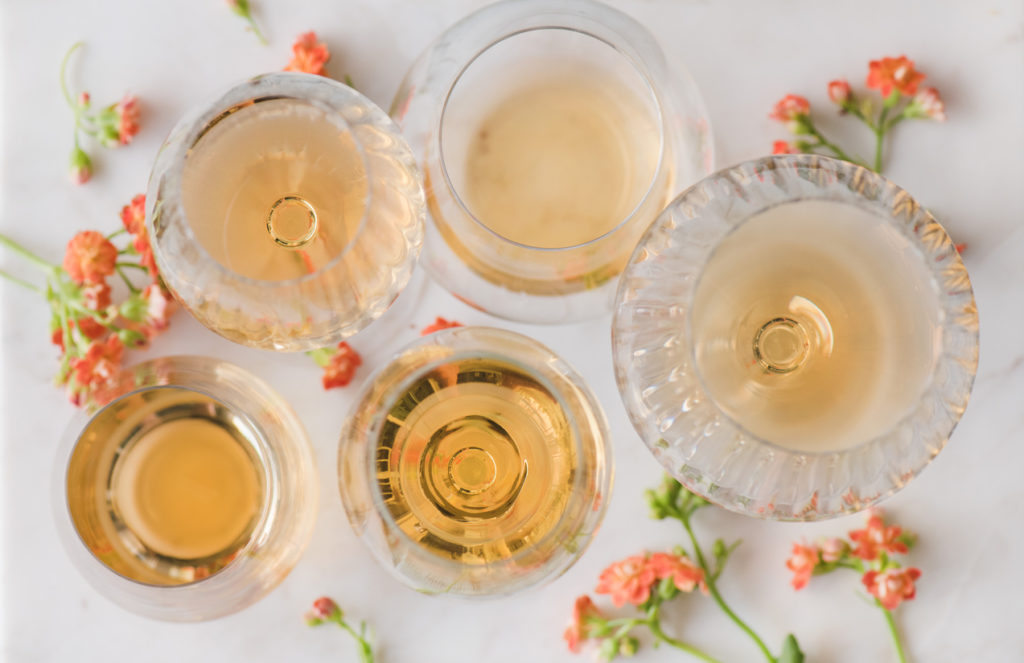
- White sparkling wine: 11-13% ABV
- Albariño: 11-12% ABV
- Pinot Grigio: 11-12.5% ABV
- Sauvignon Blanc: 11.5-13% ABV
Keep in mind that the normal wine alcohol content wine can vary depending on the specific wine and the region it comes from, so always check the label for accurate information.
Rosé Wines
Rosé wines, made from a combination of red and white grapes, also tend to be lighter in alcohol content, typically falling between 10% and 13% ABV. Some examples of light rosé wines include:
- Provence Rosé: 11-12% ABV
- White Zinfandel: 10-11% ABV
- Pinot Noir Rosé: 11-12.5% ABV
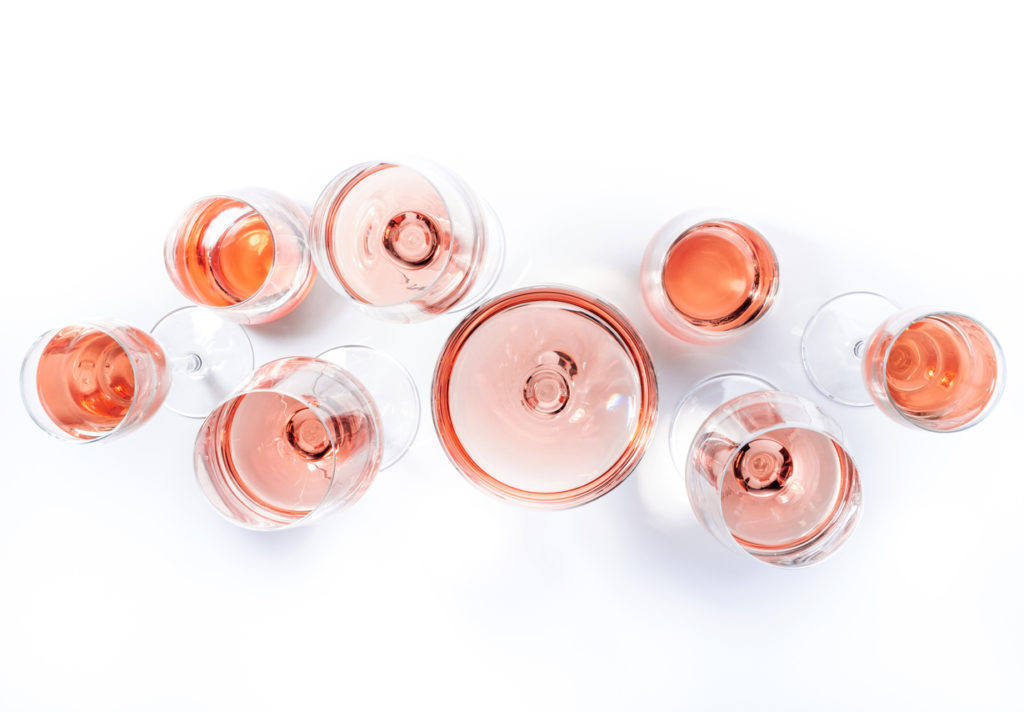
As with whites, the alcohol content of rosé wines can vary, so it’s important to check the label for the specific wine you’re interested in.
Sparkling Wines
Sparkling wines are made from white wine grapes and some red wine grapes like Pinot Noir. The alcohol content ranges from 10-13 % ABV. They`re an alcoholic drink where part of the sugar is converted into carbon dioxide resulting in low alcohol wine.
Medium Alcohol Content Wines
Medium alcohol content wines typically have an ABV ranging from 11.5% to 13.5%. These wines are popular for having a more harmonious balance of flavors and tannins, making them a great choice for pairing with a variety of dishes.
Red Wines
Many well-loved red wines fall under the medium alcohol content category. These wines often offer bold flavors while maintaining a pleasant level of alcohol that isn’t overwhelming. Some popular examples include:
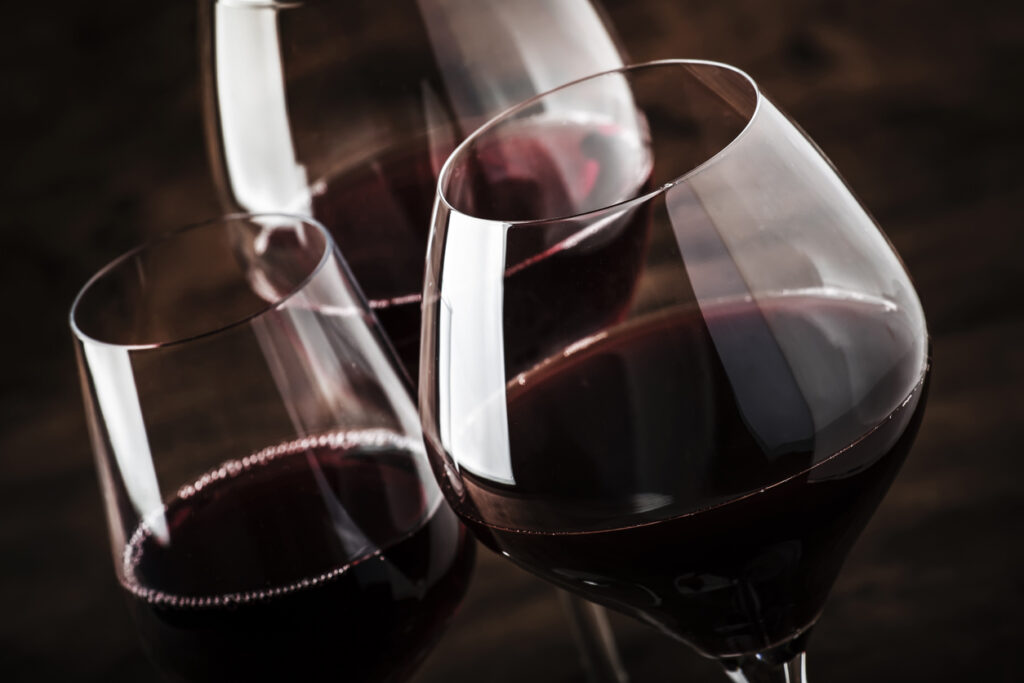
- Merlot: This smooth, easy-drinking red wine with notes of plum and cherry generally has an ABV between 12-14%.
- Cabernet Sauvignon: A red wine with rich, full flavors and an ABV ranging from 12-14.5%, this versatile red wine pairs well with red meats and strong cheeses.
- Pinot Noir: This red wine known for its light body and soft tannins, it often has an ABV between 12.5-14% and complements poultry and seafood dishes well.
These medium alcohol content red wines present a balance between the bold, tannic characteristics of higher alcohol wines and the bright, refreshing profiles of lighter alcohol wines. With their versatility and wide appeal, they make excellent choices for a variety of occasions.
Strongest Wines
Wines with high alcohol content are typically referred to as stronger wines. This section will explore the categories of Fortified Wines and Dessert Wines, both known for their high alcohol content.
Fortified Wines
These are wines that have had a distilled spirit, such as brandy, added during the fermentation process. This addition increases the alcohol content and enhances the flavor profile of the wine. The average alcohol by volume (ABV) for wines to which spirit was added ranges from 15.5% to 25%.
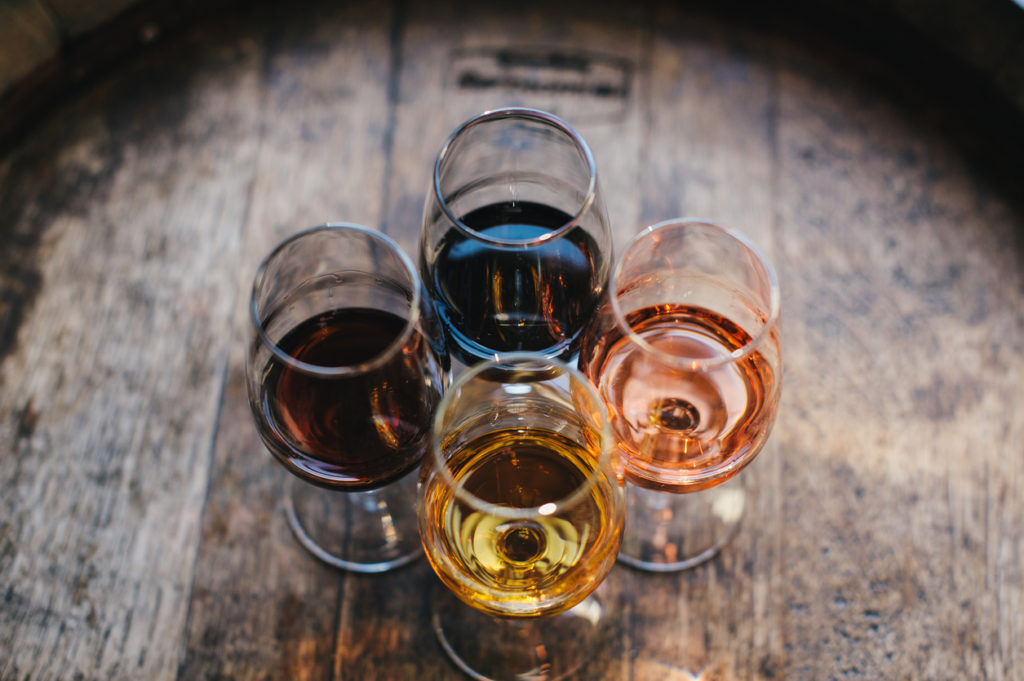
Some examples for these wines include:
- Port Wine: A sweet, rich wine from Portugal, typically containing around 20% ABV.
- Sherry: A diverse category of Spanish wines with varying levels of sweetness and alcohol content between 15% and 22% ABV.
- Madeira: A fortified wine from the Madeira Islands with a unique flavor profile, resulting from the heating and cooling processes during production, and a typical ABV of 18% to 20%.
Dessert Wines
They are sweet wines that are typically consumed with or as dessert. These wines are produced using various methods, such as late harvest, noble rot, or ice wine production. While they may not always have an alcohol content as high as spirited wines, they tend to range from 14% to 20% ABV.

Some examples of dessert wines include:
- Sauternes: A sweet, golden wine from France, produced using the noble rot method, with an ABV of 14% to 16%.
- Tokaji Aszú: A Hungarian dessert wine with a unique flavor profile, caused by the noble rot method, and an ABV of 14% to 18%.
- Ice Wine: A sweet, concentrated wine made from frozen grapes, typically produced in colder regions, with an ABV of 8% to 14%.
Factors Influencing Alcohol Content
There are several factors that influence the alcohol content of wine, including the grape variety, climate, and fermentation process. Understanding these factors can provide insight into the various alcohol concentrations found in different wines.
Grape Variety: Some grape varieties naturally possess higher levels of sugar, which will subsequently result in a higher alcohol content when the sugar in the grape juice is fermented into alcohol. Examples of high-sugar grape varieties include Zinfandel and Cabernet Sauvignon, while lower-sugar varieties include Riesling and Moscato.
Climate: The climate in which grapes are grown can also impact their sugar content and, in turn, the wine’s alcohol content. Grapes grown in warmer climates typically have higher sugar levels, resulting in wines with a higher alcohol by volume (ABV). In contrast, grapes grown in cooler climates usually have lower sugar levels and produce wines with a lower ABV.
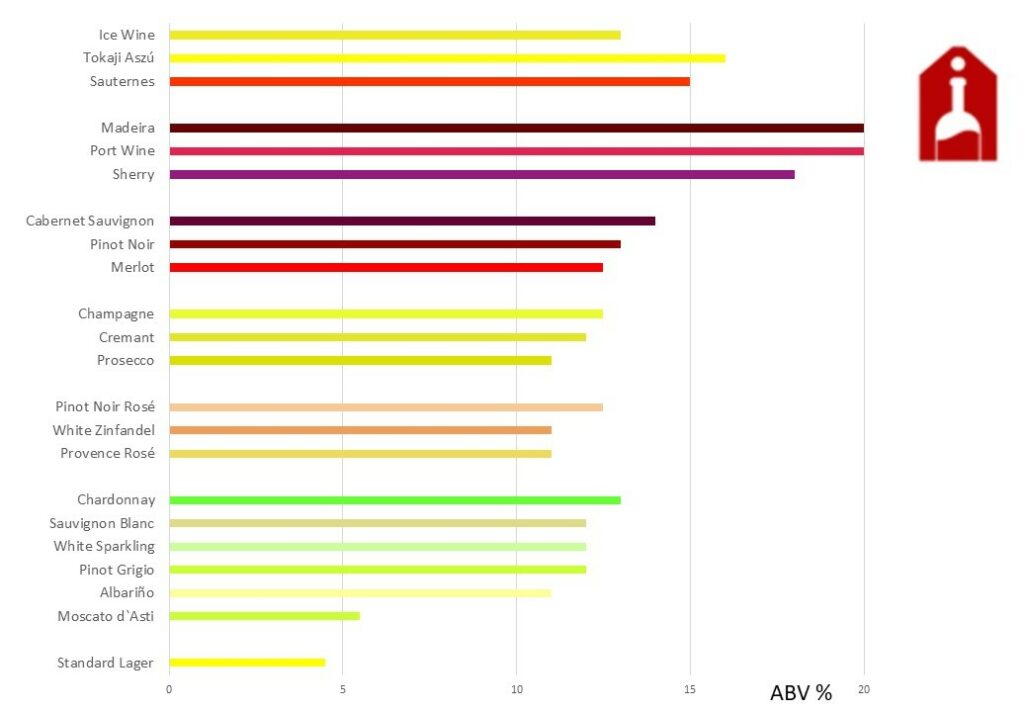
Different alcoholic beverages and their alcohol content
Fermentation Process: The fermentation process is essential in determining a wine’s alcohol content. During fermentation, yeast converts the sugar in grapes into alcohol. Winemakers can control the amount of alcohol in wine by adjusting the duration of fermentation. A shorter fermentation period will result in a lower alcohol content, while a longer period will produce a higher alcohol content.
It is essential to recognize that these factors can be interconnected, and their impact on a wine’s alcohol content can vary, resulting in a diverse range of ABV levels in the final product.
Wine Alcohol Regulations and Labeling
Understanding the regulations surrounding wine alcohol content and labeling is essential for both consumers and producers. In the United States, the Alcohol and Tobacco Tax and Trade Bureau (TTB) governs wine labeling requirements to ensure accurate and consistent information.
For wines with an alcohol content between 7% and 14%, a specific numerical alcohol content statement is optional. The brand label must include the designation “table wine” or “light wine” as the mandatory class or type designation. However, if the wine’s alcohol content falls outside this range or if the producer chooses to include a statement, it must be displayed accurately and in accordance with regulations.
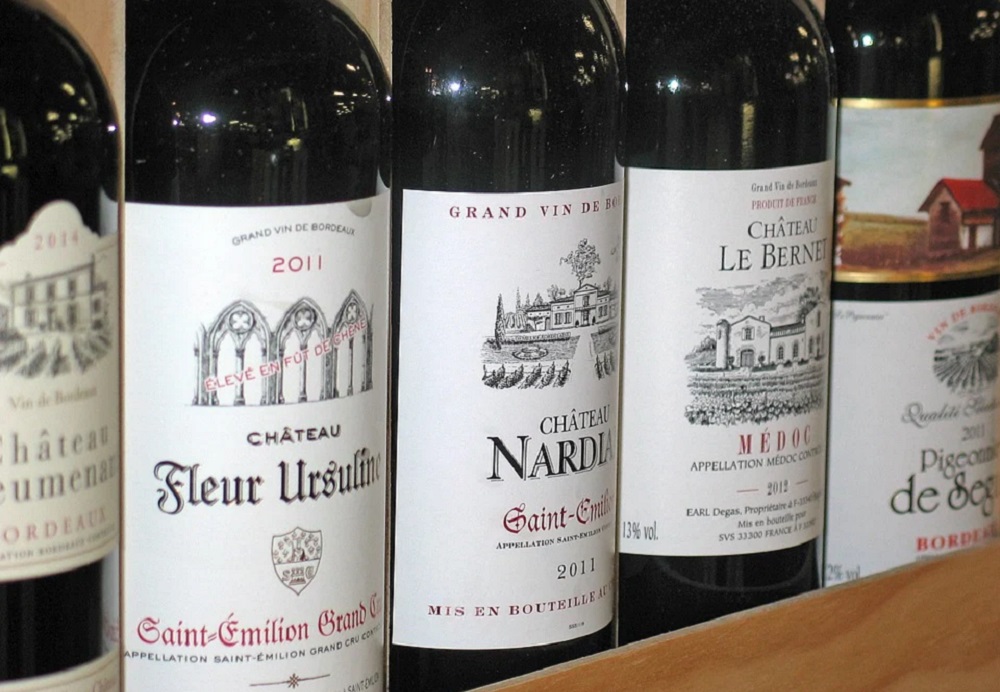
In general, wine alcohol content can vary widely, ranging from as low as 5.5% to as high as 23% by volume (ABV). This broad range offers consumers the opportunity to choose a wine suitable for their tastes and preferences. The following list categorizes wines from lightest to strongest:
- Low-alcohol wines (5.5% to 10% ABV)
- Medium-alcohol wines (10% to 14% ABV)
- High-alcohol wines (14% to 20% ABV)
- Fortified wines (20% to 23% ABV)
Proper labeling of wine is key to keeping consumers informed about the product’s alcohol content. It helps them make informed choices. Abiding by the TTB’s wine labeling requirements ensures consistency and accuracy, benefiting both producers and consumers alike.
Selecting Wines Based on Alcohol Content
While exploring the vast world of wines, it can be helpful to know how different wines vary in their alcohol content. The range of alcohol by volume (ABV) in wines can affect the overall taste, body, and style of each bottle. To better understand and select wines based on their alcohol content, here are some helpful tips and categories.
Wines can generally be categorized into three main groups based on their alcohol content:
- Low Alcohol Wines (Under 10% ABV): These wines, such as German Kabinett Riesling (8% ABV) and Italian Moscato d’Asti (5.5% ABV), are often light-bodied and sweet. The lower alcohol levels allow for residual sugars to remain in the wine, contributing to their sweetness.
- Medium Alcohol Wines (10-14% ABV): Most traditional wines fall into this category. They typically offer a good balance between body and flavor, and include wines like Chardonnay, Merlot, and Pinot Noir.
- High Alcohol Wines (15-23% ABV): Wines like Zinfandel, Shiraz, and fortified wines such as Port or Sherry contain higher alcohol levels. They often have a fuller body, richer flavors and can be more intense on the palate.
Conclusion
When selecting a wine based on alcohol content, it’s essential to consider the occasion and personal preferences. For example, low-alcohol wines may be suitable for daytime events. High-alcohol wines might work better for dinner parties or pairing with robust, flavorful dishes.
Also, remember that a standard serving of wine is typically 5 ounces with around 12 percent ABV. If you are enjoying a wine with a higher or lower ABV, adjust your serving size accordingly to maintain responsible consumption.

